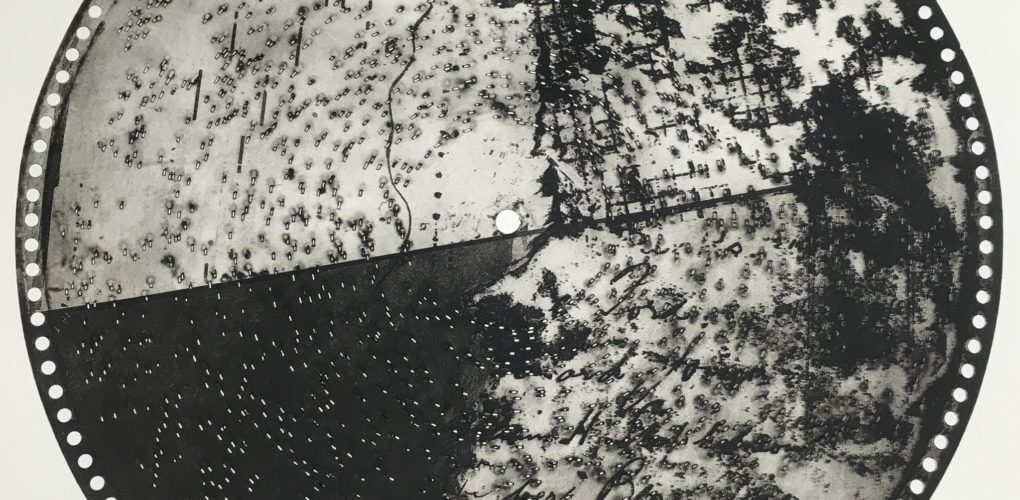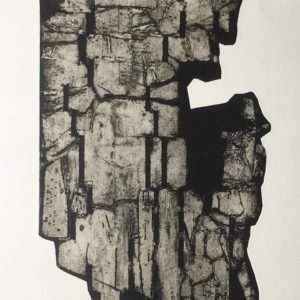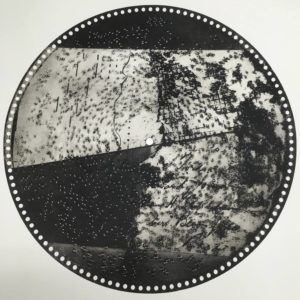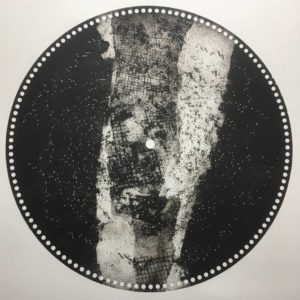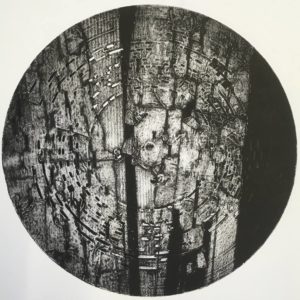The Others
 Meet the Others: Clare Phelan
Meet the Others: Clare Phelan
The Game Changers. The Rule Breakers. The Innovators. Discover some of the fantastic emerging talent showcasing their work at The Other Art Fair.
Tell us about who you are and what you do
I’m a printmaker working primarily with nineteenth and twentieth century coding technology artefacts, such of textile jacquards, music box discs and IBM punch cards. I’m interested in their cultural significance as the physical ancestors of our intangible digital world. Living in the former industrial heartlands of West Yorkshire in the UK provides ongoing inspiration and research opportunities in my practice. The archives of former textile mills support the exploration of narratives around the history of our relationship with technology.
If you only had three words to describe your work what would they be?
Archival, Metamorphic, Industrial.
How did you first get interested in your mediums and what draws you to them specifically?
Some people are drawn to the workshop feel of an art college print room and I was one of them! There is a ritualistic appeal associated with the various tools and equipment on offer and it takes time to learn the skills and techniques rooted in the history of the discipline. One of the joys of printmaking is working with the happy accidents that occur with processes you can never completely control. Using non-traditional materials provides opportunities to further push the boundaries of traditional printmaking.
I work with an etching press that is about 50 years’ old and know its historical provenance. It belongs to an analogue world that resonates with the artefacts and traditional printmaking materials and methods I use.
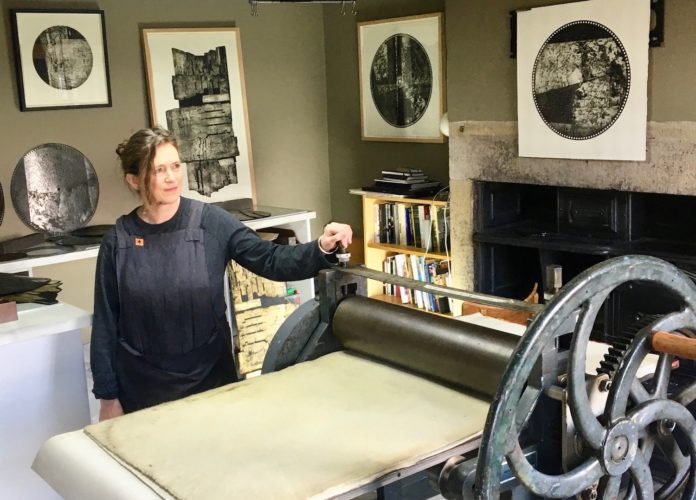
Can you walk us through your process? How long do you spend on one work? How do you know when it’s finished?
The two processes I employ in my practice are collagraph printmaking and etching. The collagraph process allow me to explore the textural qualities of the artefacts, while etching onto metal music box discs offers me the opportunity to introduce surface detail into the work. Using nineteenth century music box discs as etching plates requires some preliminary preparation, including sanding rust from the surface and hammering flat the pins on the reverse. I don’t work with a ‘blank canvas’, so complete control of the finished print is not possible, I endeavour to collaborate with the pre-existing meaning and information contained within the disc, respecting its inherent qualities while investing it with new meaning.
Using a photo etch process, I coat the plates with a photo sensitive emulsion, and expose information onto the disc that references our relationship with technology. Not all the information will transfer onto the surfaces due to their unpredictable nature. The real work on composition begins after exposure as I begin to think about how to create a coherent image. The disc is submerged multiple times in nitric acid and ‘proof printed’ at every stage. It can take a couple of weeks to finish a print, and I do sometimes push the process too far. I find working on a small series is a useful way to allow space for decision-making and knowing when a piece is finished.
Has being in isolation affected your artwork practice in away way?
Black ink has been central to my practice for many years and at the beginning of lockdown I lost my emotional connection to it. My creative response to the pandemic has been to focus on the subtlety and sensitivity of blind embossing, so essentially, I have moved from black to white. I’m also using a process called chine collé which bonds a thinner paper to the main printmaking paper. I’ve used a small accent of colour which appears and disappears in the image in the same way as the blind embossing, depending on the light and shade that is cast across the surface of the finished print. This new body of work is called ‘Evanescence’ and references the loss, the fragility and uncertainty of the present time, the project also holds the quiet beauty of some of my experiences during this unique moment.
What is the best advice given to you as an artist?
Apply for lots of opportunities, that way you learn not to take rejection personally. There are so many reasons for the choices that are made when curating an exhibition or art fair and not being selected is often not about you or your work, but about the balance of a project and the curator’s vision.
Shop artwork by Clare and other trailblazing artists at The Other Art Fair’s Online Studios.
Introducing The Other Art Fair Online Studios, a new online platform offering art lovers around the world access to over 800 Fair artists. The Online Studios will keep our community feeling inspired, engaged, and continue to spread joy through art.
